Discover more from Pope Head Post
It is high time we approached the proverbial lynchpin of our ley line, and in this case, it is less a pin and more a needle. The precision with which that pharaonic totem was placed in its current location in Central Park, and the identities of the patrons who funded and carried out its transportation from Alexandria to New York City vindicate this examination in its entirety. Let us turn our attention to Cleopatra’s Needle.
What is truly fascinating about this installment, is I ended up stumbling upon a true mystery. A web of plots and masonic intrigue, and an astounding archaeological discovery that has been ignored for the last hundred years. I hope you enjoy reading this as much as I did researching it. I am making this installment free. If you wish to read the preceding installments, and dozen more that are coming, subscribe.
_________________
Our story begins in the 14th century BC, in the land of Egypt, with a man who defined an aeon. Thutmose III, the sixth pharaoh of the eighteenth dynasty, a historical giant, a warrior king, who captured 350 cities over at least 17 military campaigns, a man of ravenous ambition, who obtained much of the near east from Nubia to the Euphrates—a man who walked with gods. Through sheer will and innate genius, he gave birth to the first combat navy in the ancient world. However, his reign was not merely defined by the glory of territorial expansion and martial skill, but he was also a great builder of monumental structures.
His patronage gave form to four obelisks. Obelisks that are today considered to be some of the finest examples in all of antiquity. And they stand today in two cities that defined the past, and two cities that define the present. One in Rome and one in Istanbul, the loci of that old empire that usurped Egypts splendor. And one in London and one in New York City, the financial districts that now define the imperial core of modernity. Each has inspired generations of awe and adoration, countless shivering pupils have gazed upon their alien countenance, conjuring up fever dreams in millions of men across the ages. But our focus today is upon only one. Well, two.
The pair of obelisks that stand in NYC and London are referred to today as Cleopatra’s needles, but the title is somewhat of a misnomer, as they were originally erected by Thutmose III in Heliopolis in the middle of the 14th century BC. In 12 BC the obelisks were moved to the Caesareum in Alexandria, a temple constructed by Cleopatra, leading to the title they now bear today. The first of the two to be moved to Europe was the one now in London, which was originally given to the British by Muhammed Ali, commemorating the English victories in the Battle of the Nile and the Battle of Alexandria. But it is the history of the NYC obelisk that we shall be focusing on today. That forms the center of a masonic web stretching the world over.
The impetus behind the American desire to acquire an obelisk for themselves began in a puzzling way. But first, I would like to make it clear that much of the information on the obelisk’s transportation is found in an eyewitness account by the American diplomat in Egypt Elbert Farman in his book “Egypt and Her Betrayal.” Let’s begin with Farman’s account.
A series of letters were sent around the world resulting in a veritable comedy of errors where Stebbins and the Department of State were informed that the Khedive had never expressed such an intention, and the New York Newspaper had made a mistake. And yet, this very “error” set into motion the actual request and acquisition of the monument in question. Farman, the diplomat who records these events, at the behest of Stebbins, Vanderbilt and now the State Department, formally requests an obelisk from the khedive at the time, Ismael Pasha. And surprisingly, Ismael Pasha seems to consent to such an idea. But it is the Luxor obelisk that Farman requests, not thinking there was any real possibility of acquiring the remaining of the two Needles of Cleopatra.
However, it is soon revealed that the Luxor obelisk (the only one that Farman believed there was a hope of obtaining) was caught in a diplomatic gridlock, as it had been promised to the British many years before. The British, who had just recently acquired the other of ‘Cleopatras needles,’ had no interest in actually collecting the Luxor obelisk, but pressed the issue purely so the Americans could not obtain it. (lol).
Things were not looking promising. But a string of political intrigues and turmoil in egypt over the next two years would end up working in the Americans favor. It would be in 1879 that a coup would oust the Khedive Ismael Pasha, changing the political landscape and curiously assisting the Americans in expediting their obelistic endeavors.
And that was that. It is worth pointing out that the obelisk was not given to the United States, but directly to the city of New York. Against all odds, New York would not only have an obelisk but the one it originally set its sights upon, which the Egyptian locals were so vehemently opposed to parting with.
Before we even advance to examining the transportation and placing of the obelisk in Central Park, let us take a look at the players involved in this impressive feat of acquiring the obelisk from Egypt.
Let us start with the original article in the NYC newspaper—the supposed mistake.
Is it possible, that this false information was intentional? A ploy to set these events in motion? This was my immediate working hypothesis.
I attempted to find a copy of the original newspaper article. Unfortunately, that has proved to be impossible. But, I managed to find an article from a week after the original, referencing the first one.
(From The Sun, October 9, 1877).
Well, this explains why I could not locate the original article, as it came from the World, which does not appear to have ever been archived digitally. But this makes things all the more interesting.
In 1877, The World was owned by Thomas A Scott, who supposedly used the paper purely "as a propaganda vehicle for his stock enterprises." The World was one of the now classic examples of ‘Yellow Journalism.’ The question I propose is this: Was the erroneous reporting of the Khedives supposed intention of giving NYC the Alexandrian obelisk truly a mistake that just so happened to domino into reality? Or was this a methodical plot to get the ball rolling, a genius example of parafiction shaping the future? It certainly worked, it easily generated a tremendous amount of excitement and support, in a time when the idea of getting such an obelisk was unthinkable. In the words of Farman:
And yet this audacious move bore fruit, and they would acquire this specific obelisk from the Khedive for the explicit purpose of bringing it to New York.
Let’s take a look at the players involved. William H Vanderbilt from the very beginning offered to finance the entire endeavor. Vanderbilt, the richest living american at the time (after the death of his father), was a railway magnate. (And as we shall soon see- a Freemason). And so then it is very curious, that the owner of New York World (the publication in which the original article was published) was owned by another prominent railway magnate, Thomas A Scott. Scott and Vanderbilt have known each other, but it is difficult to acquire anything too concrete. But we can be assured that the railway magnates of the US had been in recent contact right before the article's publication, as the Great Railway Strike of 1877 had just recently reached its disastrous climax. A tenuous connection, but certainly a curious one. It is not a stretch to imagine that the article could have been put out there to get the ball rolling on this ambitious project.
But let us now examine the crux of the matter, the vast masonic web that organized the entire endeavor.
Let us begin on the Egyptian side.
If you recall from the original testimony, it was only after the coup d’etat occurred by the new Egyptian national party that a new Khedive was installed, a khedive who broke the month-long stalemate over the fate of a potential American obelisk. In fact, after the coup, it was our diplomat friend Farman who approached Cherif Pasha (the Khedives minister) to basically terminate the obelisk discussion once and for all as it was obviously going nowhere. And yet…
Something peculiar to this new Khedive had changed the winds entirely. This new Viceroy of Egypt immediately decides to grant the Americans an obelisk. Which is obviously strange, as this new viceroy was brought in via a nationalist and nativist coup. A hypothesis began to form in the corners of my mind. And what do you know…
I will now invite you to read a segment from a book on Egyptian Freemasonry.
Both the new Khedive, Tawfiq Pasha, and his prime minister Sharif Pasha were freemasons.
(Source: Freemasonry in Egypt 1798-1921: A Study in Cultural and Political Encounters, Karim Wissa).
Could it be that this possible masonic channel, facilitated the gifting of the obelisk from Egypt to the de facto masonic lodge in NYC? This was a regime that took power through nativist sentiment and anti-imperial reactionism, why then would they depart with such a treasured national artifact unless some other channel existed?
Regardless of whether the new Khedive and his minister’s freemasonic membership influenced the decision to give the obelisk, it is an uncontestable fact that they were freemasons, and that the individuals who brought the obelisk to NYC were fellow masons as well.
William H. Vanderbilt: philanthropist, tycoon and Freemason offered $100,000 to anyone that could successfully retrieve the remaining Obelisk and bring it a place of his choosing in New York City. Henry Honeychurch Gorringe, a Lieutenant Commander of the US Navy, and also a Mason, rose to to the challenge, assembling a team of engineers, sailors and Egyptologists to retrieve the Needle (the majority of which were Masons.)
Yes, it would be Commander Henry Gorringe, an out and proud Freemason, who would take charge of the entire expedition to actually move the hulking monolith from Alexandria to Manhatten.
And now we arrive at the most fascinating discovery of this entire article. A mystery that stumped me when I first came across it. The reason for the Masonic obsession with this particular obelisk. I will begin with the eyewitness account of Elbert Farmen, as his reputation was unimpeachable, and since he himself had no connection to masonry, his testimony holds weight.
When Gorring and his team went to secure the obelisk before transportation, they made an astounding discovery within the monolith's base. Let’s look at Farman’s account of this discovery.
When I first read this I was astounded. Farman, a non-mason, presents this in a very muted and objective fashion. I can only imagine the shock and excitement experienced by such a discovery by Masons of the day.
Masons were constantly searching for validation of their orders supposed ancient origins, with the more excitable of the bunch claiming speculative masonry was antediluvian, as old as time immemorial. Here we have a base structure under an ancient monument that seemed to conform to modern masonic cornerstone-laying ceremonies.
I immediately went about searching for anything online to validate these findings. And yet…
I could find absolutely no scholarship produced in the last century that approached these bizarre findings or what became of the initial investigation. No academics debunked the seemingly absurd claims. It was completely ignored after the beginning of the 20th century. But from all the sources I could find from the time, this was huge news, especially among Masons, but also among very famous archaeologists.
In the words of Commander Gorringe:
“The striking similarity between the forms and actual and relative positions of the pieces… and the emblems of Freemasonry, led to the appointment of a committee of Freemasons by the Grand Lodge of Egypt, to examine them; and after discussion and deliberation, the following conclusions were announced: The polished cube found in the east corresponds with the perfect Ashlar, the polished square, with the builder's square, the rough block found in the west corner the rough ashlar. The stone with the snakes, emblematic of wisdom, the axis stone the trestle board and the marked chevron the Masters Mark. The polished white cube an emblem of purity and the eighteen pieces forming the lower step designate the word of the 18th degree.”
-G G Gorringe
Where can we find in-depth records of the Masonic Committee’s findings?
Unfortunately, I have not been able to find a digital copy of the original Herald issue, but it was reprinted in full from a book published that very year. A book whose author and contents we will return to later in the next article. But first, I will insert the entirety of Grandmaster Zola’s original statement here. You can simply skim it if you like and skip to the end, the point being, that this blew the minds of the masonic authorities of the time, who believed this proof of their order’s ancient existence and their orders (or some early form of it) hand in the creation of the obelisk.
_______________________________
Now before we continue, let us recall some pieces of information from the last two installments. You have heard the name Zola before, just as you heard the name of the newspaper “The Herald” before.
It was Grandmaster Zola who was so fundamental in developing the Rite of Memphis in Egypt. From the last article:
And now, from the article “Freemasonry in Egypt 1798-1921: A Study in Cultural and Political Encounters.”
What are the odds?
And now of course, for the newspaper he chose to publish it in, The Herald. The Herald at the time was owned by James Gordon Bennet Jr, the man obsessed with owls, who had the Minerva statue dedicated to him. From the first article:
Curious.
______________________
So. Commander HH Gorringe brought the obelisk and its base to New York City, and it arrived in July of 1880. The site for the obelisk in Central Park, right next to the Metropolitan Museum of Art, was decided upon by a small and secretive council.
Gorringe had an ominous statement in regard to the location that was decided upon:
Gorringe wrote, "In order to avoid needless discussion of the subject, it was decided to maintain the strictest secrecy as to the location determined on." He noted that the prime advantage of the Knoll was its "isolation" and that it was the best site to be found inside the park, as it was quite elevated and the foundation could be firmly anchored in bedrock, lest Manhattan suffer "some violent convulsion of nature."
A position that just so happened to align perfectly with the worth and Eddis obelisks in Manhattan.
The cornerstone ceremony was held in October of 1880, presided over by Jesse B. Anthony, Grand Master of Masons in the State of New York, and 9000 masons in full regalia.
(From the History of Free and Accepted Masons of New York by CHARLES T. McCLENACHAN, 1894)
Did you catch it?
…………
23 Skidoo.
The procession began at the exact location where this investigation started, in front of the Worth Obelisk, and the future Flatiron building—further linking the two monuments
___________________
One other section from that passage to pay attention to.
The World. The original paper that erroneously published the Khedive’s desire to give New York an obelisk. The false information that started all of this. This Hurlbert figure, who is he? Wait a minute…
He was one of the few who chose the location along with Gorringe, Church and Vanderbilt.
It was at this point, everything became even stranger.
I found a publication detailing the move of the obelisk from the Met.
And I couldn’t believe my eyes.
So, it was Hurlbert who wrote that first article in the World… but… the rest of this information… this isn’t what happened at all. We know from both newspaper articles at the time and from the diplomat Farman that this simply wasn’t the case, the article that was run was universally understood at the time to have been false information. Then why is the Met publication whitewashing it and rewriting history? Let’s read on.
Amazing. This is quite a blatant lie. The Khedive didn’t have second thoughts, he simply had never been approached about such a gift or considered it at all! We have testimonies from Farman, Dixon, and the Sun confirming that this was not the case! And yet the Met is quietly blatantly and publically lying about it! For what end?
In case you forget, let me refresh your memories.
(From The Sun, October 9, 1877).
And from Mr Farman himself:
And…
And so here we have the Met account, for whatever reason, rewriting history. Is this to cover up the fact that a very duplicitous plot was concocted by several men to acquire this object? So it seems.
One other interesting paragraph from the Met’s account:
I think we have just about solved it. From the beginning, Hurlbert ran this false information of the Khedives intention to give NYC the obelisk, and within hours after the excitement was generated, Vanderbilt humbly and “selflessly” offered to fund the whole thing. This of course put the state department and the Khedive himself in an awkward situation, and one thing led to another. Vanderbilt and his masonic cohorts would have their obelisk.
What a strange tale indeed.
Last thing for this installment.
We have not even scratched the surface yet with the obelisk. In the next installment, we will discuss its implications through the lens of the newly formed rite of Memphis-Misraim. And it will get stranger then you can possibly imagine.














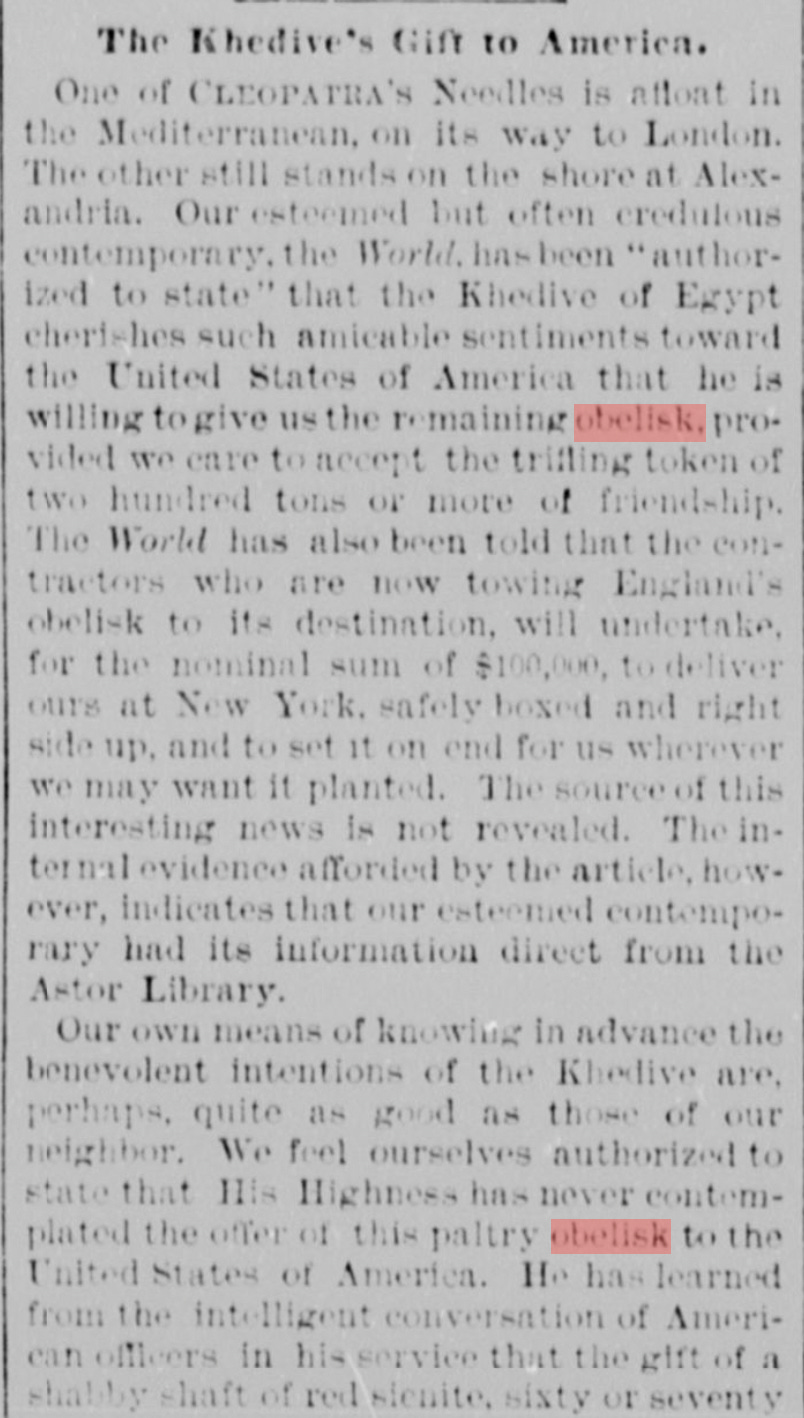







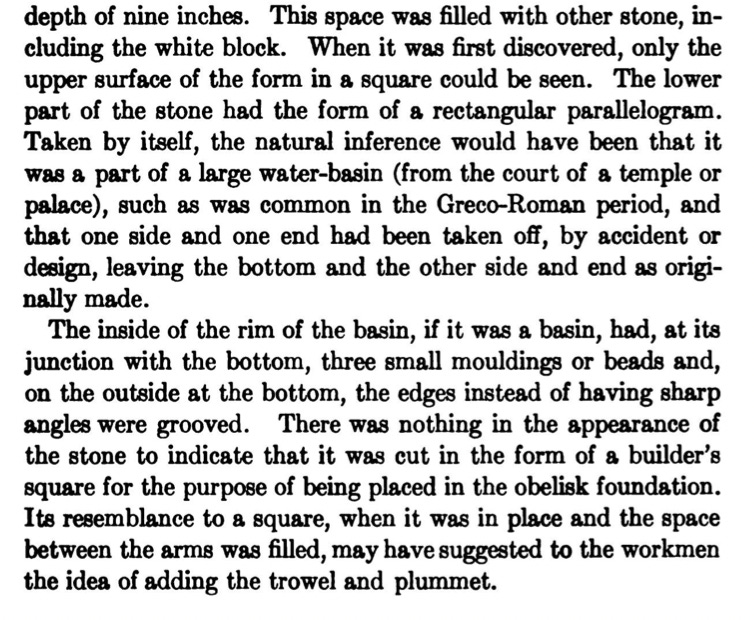




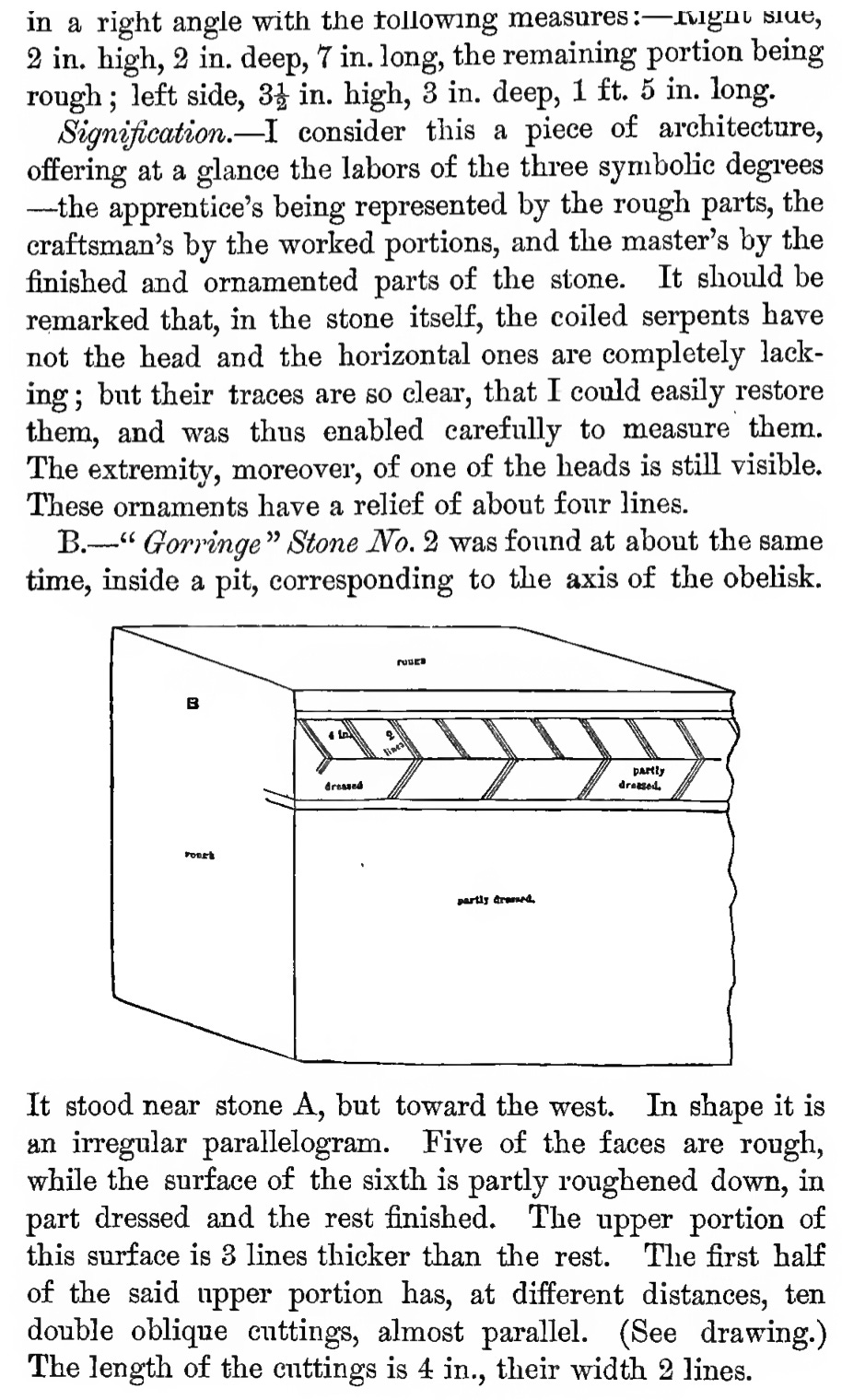





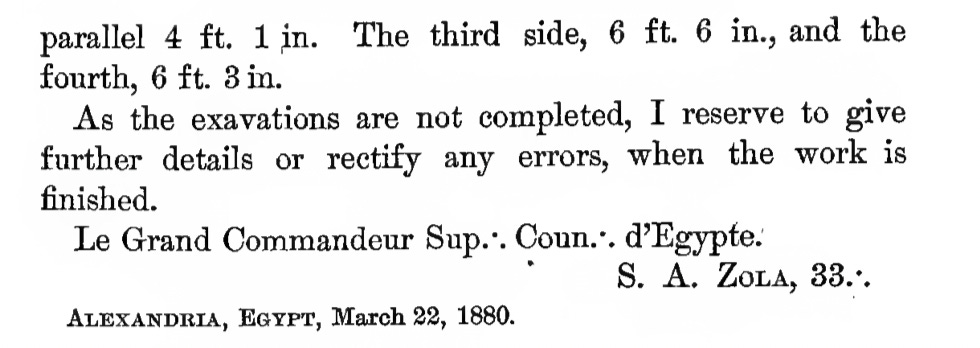










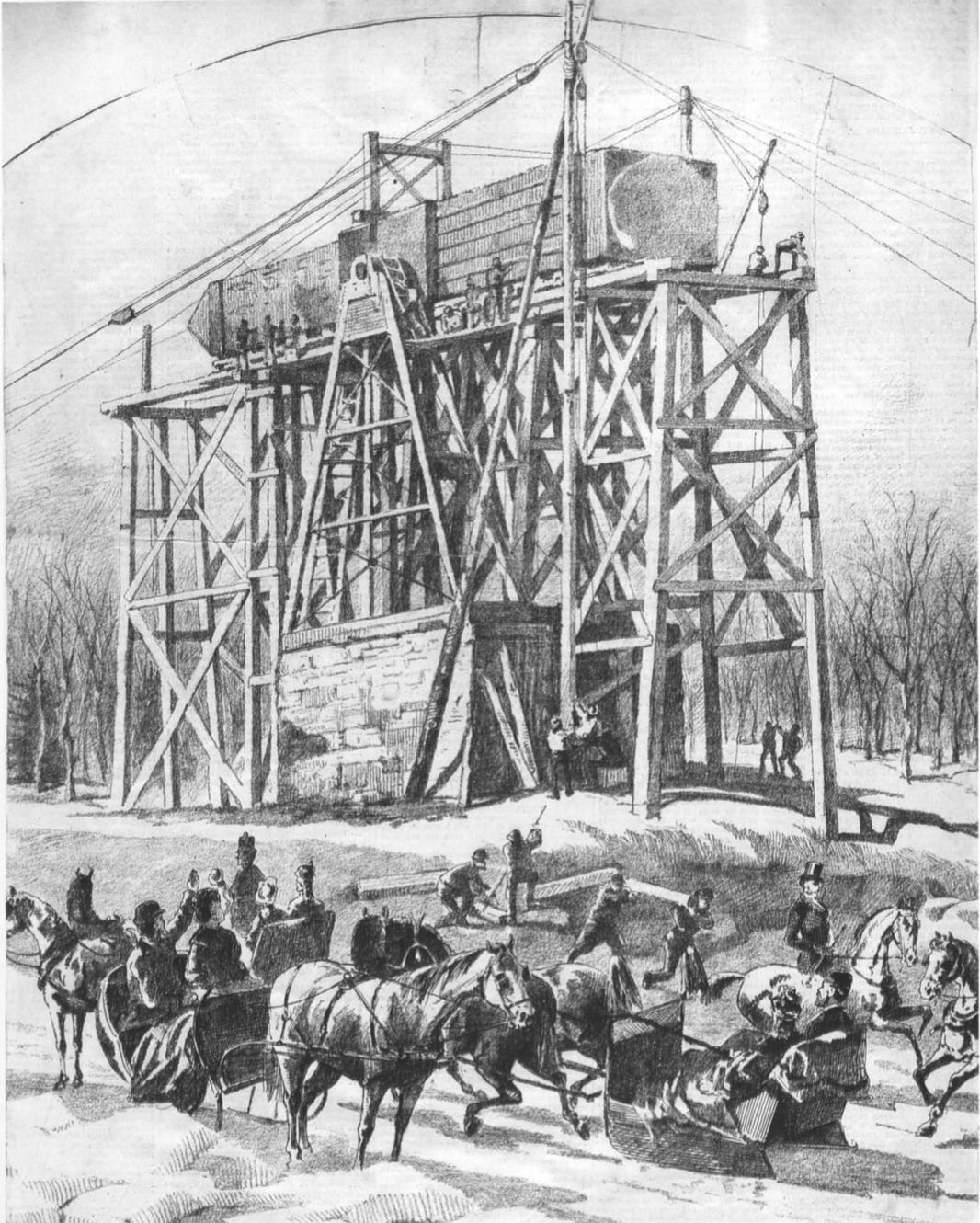


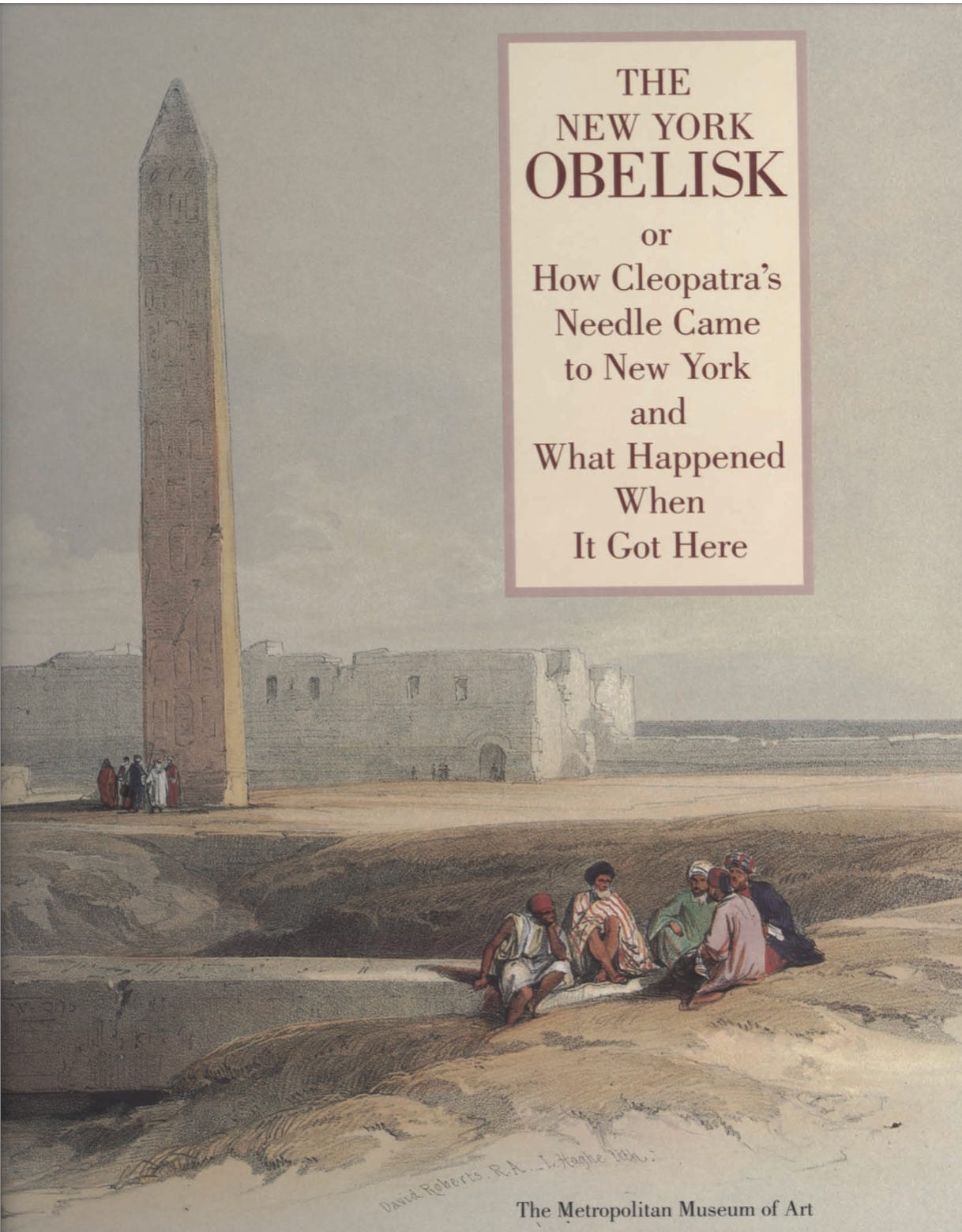




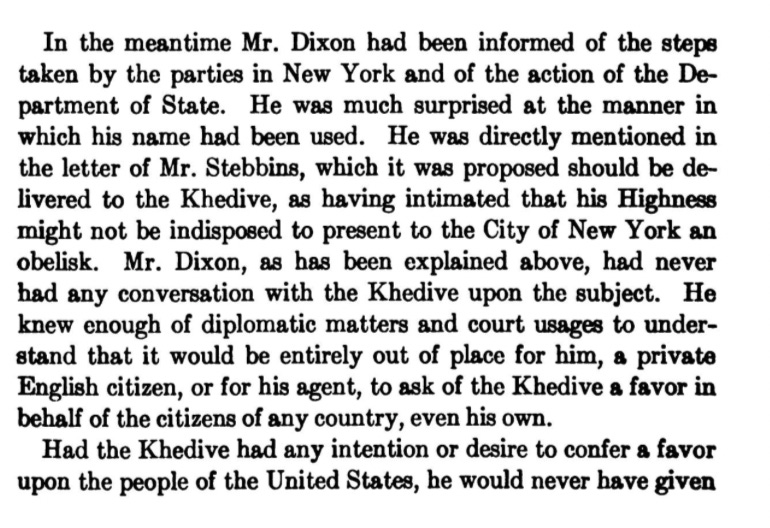




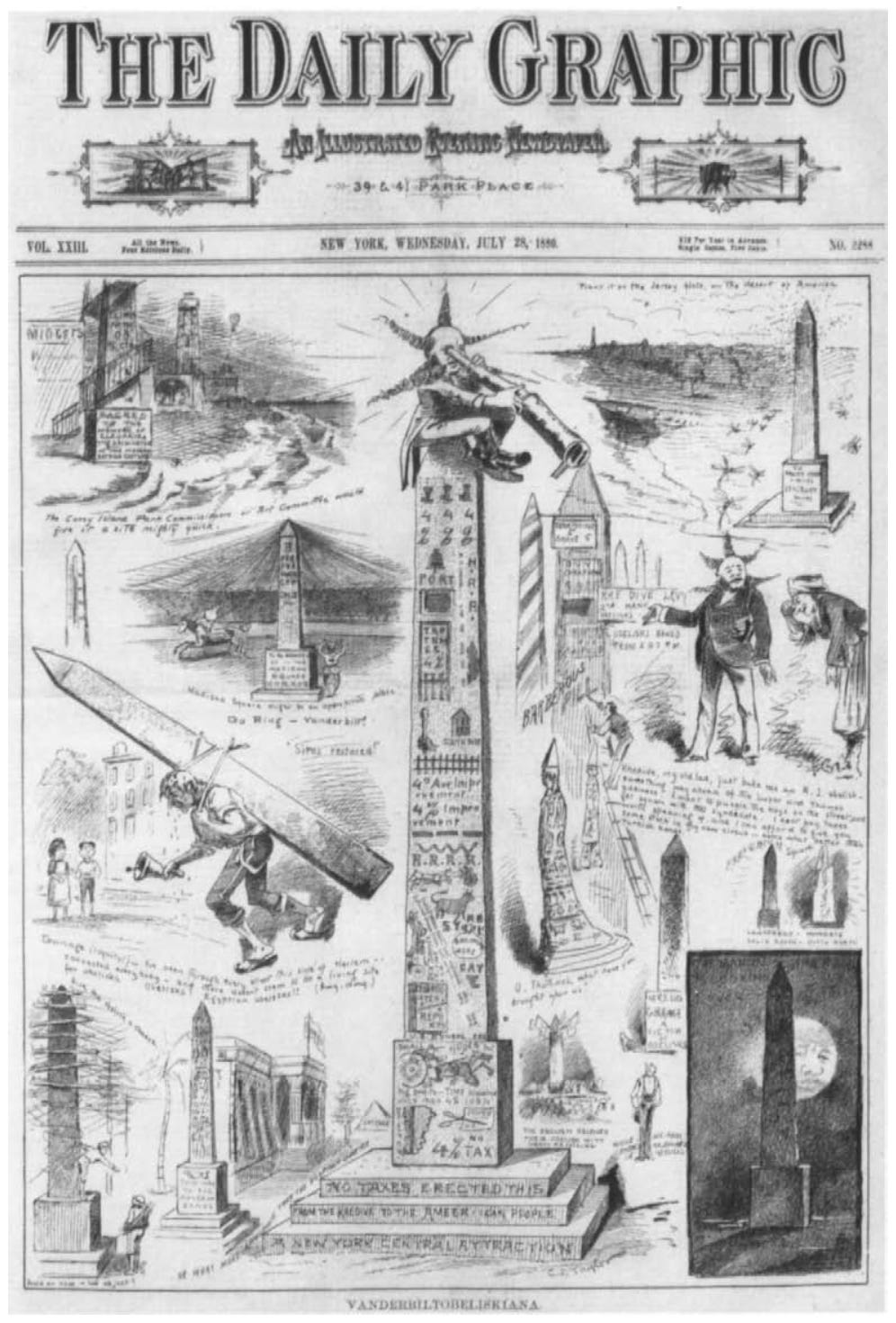











Dear Popehead, what an amazing destiny you have, that is, to teach us these hidden things of history that have so much significance regarding how our history has unfolded. God bless you with wisdom, insights and discernment.
hyperstition brought the obelisk to nyc